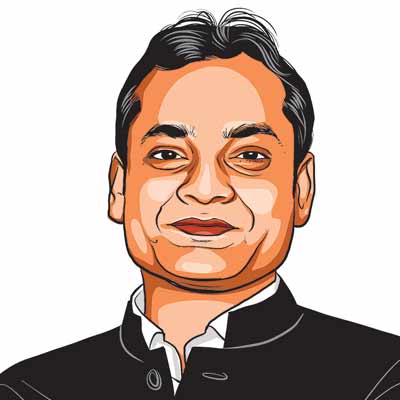Opinion The bruising facts
The Australian Minister for Foreign Affairs,Stephen Smith,is on his third visit to India to brief New Delhi about the steps taken by Canberra in putting an end to attacks on Indian students.
The Australian Minister for Foreign Affairs,Stephen Smith,is on his third visit to India to brief New Delhi about the steps taken by Canberra in putting an end to attacks on Indian students. The visit aims to add further substance to the fact that India and Australia are working together to deal with the problem,which is affecting bilateral ties. It is also important in the light of the fact that Indias External Affairs Minister S.M Krishna made a suo motu statement in Lok Sabha last week,meant to inform about the attacks on Indians in Australia and the steps taken by India as well as by Australia in dealing with the range of issues concerned.
As is evident,the assaults have become a big issue in both countries over 500 Indian students have been battered and looted Down Under in the past three years. Australia appears to be doing all it can to save the third biggest source of its income,concerned about the drop in student visa applications which,according to Andrew Smith of Australian Council for Private Education and Training,has gone down by 40-50 per cent this year.
More than eight Australian ministerial visits and numerous rounds of high level dialogues have been held so far. The Victoria police also handed over a dossier to India in January which says,out of 18 cases investigated so far,two people were run over by a train and there was no foul play. While three cases remained unsolved,33 people have been arrested over the remaining 13 cases. Both India and Australia have been putting in a lot of effort,but irresponsible reporting in both India and Australia have ensured that the debate has taken an unseemly turn.
There are many reasons to suppose that Krishnas statement will defuse the blame game and help start a constructive dialogue.
First,in the statement Krishna acknowledged that the number of attacks has gone down due to strenuous attempts made by the Australian federal and the state governments. This should soften India-Australia relations as Canberra feels encouraged to work in close cooperation with New Delhi,which otherwise has looked like it was trying to corner it on the issue.
Second,the government has partially accepted that,contrary to popular perception,the majority of attacks may not have a racist strand. It says,The attackers are of mixed ethnicity,including sometimes,other Indians. The recent revelations in the Jaspreet Singh and Ranjodh Singh cases authenticate this point. Recognising the possibility that some cases may have a racial angle,the Victoria state government has lately revised the Victorian Sentencing Act 1991 and is conducting a review of the justice system to address racial offences. This leaves no scope for a misleading debate in India that White Australia days are back.
Third,the statement explains that the increase in the number of attacks corresponds with the increase in the number of Australia-bound Indian students. More than 100,000 students have joined Australian colleges and universities in the last five years,with a 141 per cent increase between 2006 and 2008. Many of them joined fake courses for permanent residency requirements. This has also been taken up seriously by Canberra. Australia is providing relief and relocation to suffering students because of the sudden closure of fake institutions; bilateral working groups have been set up. The Australian department of immigration and citizenship has also introduced measures to overhaul the skilled migration rules in order to avoid such problems.
As far as the safety of Indian students is concerned,several steps have been taken and many are in the pipeline. Operation Repped,Embona anti-robbery task force,rapid response units,the federal taskforce headed by the Australian national security advisor,taxi council,international student care service and community reference groups (which involve the local Indian community) are a few steps which are strengthening police patrolling and surveillance systems in Australian cities.
However,there are a few negative trends which should be carefully handled. First,the geographical expansion of attacks from Sydney to Melbourne,Adelaide and Brisbane. Second,the severity of attacks: in 2007,the attacks seemed like acts of mugging. Subsequently,however,the enormity of incidents also increased. The first reported incident of physical assault happened when a student,Saurabh Sharma,was assaulted in a Melbourne train on May 23,2009. Events took an even nastier turn when Nitin Garg was attacked on January 2,2010 and later succumbed to his injuries. The Australian government must be extremely cautious about this qualitative transformation and adopt a zero tolerance policy.
The writer is at the Institute for Defence Studies and Analyses and fellow,Australia- India Council





